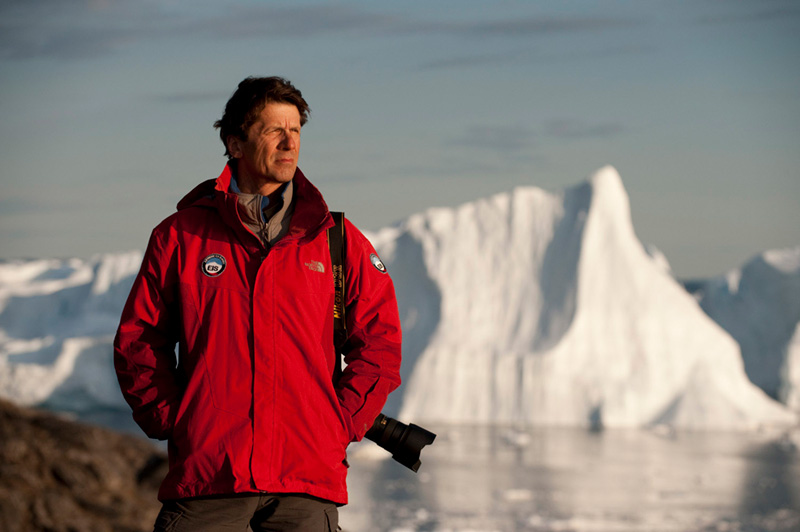Film Review: Chasing Ice
By Amy Nelson

Photographs were downloaded periodically and used to create time lapse videos to both show and analyze rates of glacial calving (when chunks of ice break off and fall into the water below forming icebergs) and retreat. Live video footage taken while maintaining and downloading the cameras supplements the stunning photographs. This footage includes the largest incident of calving glacial calving ever captured on film, when a portion of Greenland’s Ilulissat Glacier equivalent in size to the lower tip of Manhattan ripped apart, and its 300-400-foot high ice faces crashed into the sea over the course of 75 minutes.

There is power in visualization. I had the opportunity to visit Solheim Glacier, located just North of Vik, Iceland in April of 2016. I remember the tour guide stating how the glacier was shrinking. As he parked the tour bus, he struggled to describe the indicators of where the edge of glacier had been a year prior. My friends and I, having no point of reference, did not grasp the vast expanse of ice that had long since melted and returned to the sea. Observing a fragile landscape at a moment in time tells a powerful story, but it is only the tip of the iceberg as they say.

Balog’s story is as compelling as the film’s imagery. When he took the time to listen to the stories of the glaciers as told by both the photographs and the air bubbles trapped deep within the ice, his views were challenged. At the onset of this adventure, Balog was skeptical of human driven climate change. Ice core science showed a marked difference in air temperature and carbon dioxide after the industrial revolution. Healthy glaciers retreat in the warmer summer months and grow in cooler winter months. A study referenced in the film shows that of 300+ glaciers studied through historic imagery, only four grew while the rest retreated or disappeared entirely. Balog now argues that glaciers are the canary in the coal mine when it comes to climate change, and we would be wise to take notice.

The film has a 96% rating on Rotten Tomatoes in addition to receiving critical acclaim on the 2012 Film Festival circuit (Excellence in Cinematography at Sundance Film Festival). It is available to stream on Netflix and to rent or buy on Amazon, iTunes, Vudu, Playstation, and Microsoft Store.
